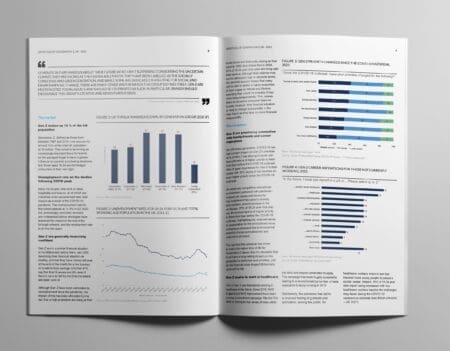-
Articles + –
How Facebook and virtual reality will change online video advertising
The power of online video has certainly not been lost on marketers; according to Mintel’s Internet Ads: Search, Display and Video US 2015, spend on digital video ads is set to double from $3.3 billion in 2014 to more than $6 million by 2019. In March, Facebook announced changes to its news feed algorithm that’s set to disrupt the way marketers use online video. According to Facebook Product Manager Vibhi Kant and Software Engineer Jie Xu, the changes will make live video appear higher on users’ news feeds. Desire to change the news feed came as a result of Facebook data showing that users spend three times as much time watching live video compared to other formats.
However, video advertising can be a double-edged sword. It holds potential to be more interesting than static ad formats, but it can also be disruptive. When asked how they viewed different ad formats, three in five consumers say they feel negatively about video ads; by contrast, just over a quarter said the same about sponsored and organic search. Static ads on the border of the web page were also less disruptive, with only 25% of respondents saying they felt negatively. With video, the risk when ads miss their mark is far greater because the negative and disruptive experience could then become associated with the brand behind the video.
At the same time, there is ample opportunity for companies to leverage the strengths of live video to minimize the risk of creating a negative experience in the first place. When looking at popular live video on other platforms, such as the video game streaming service Twitch.tv, the popular channels offer a high degree of interactivity. The users broadcasting themselves offer insight and respond to their viewers.
In a similar way, interactivity will be key for brands hoping to engage their audiences. Live video will present opportunities to cater to consumer demand for information. For instance, a live video broadcast shortly before a new product launch could help to address consumer questions in an interactive format. The potential extends beyond showcasing products, however; destinations like hotels and resorts could also use live video to create virtual, interactive tours of their locations.
Create more than just ads; create experiences
As tracked by the Mintel Trend Experience is All, brands face mounting pressure to innovate in terms how they engage customers. The focus on price (discounts) and speed over meaningful experiences has left consumers hungry for something…more. This is another area where live video can have a dramatic and lasting impact on consumers, especially when considering the burgeoning interest in technology like augmented and virtual reality. We already see this playing out in the retail space with devices like smart mirrors that let customers virtually try clothes or makeup on before they buy. The combination of AR, VR and live video will deepen customer experiences even further by giving users opportunities to see and experience things they wouldn’t be able to otherwise; imagine if that same virtual hotel tour also came with a personal guide who could answer questions in real time.
While it may seem like science fiction to create VR experiences in a live, broadcasted format, one company has already released a camera that is capable of live streaming VR in ultra-high definition resolution. VideoStitch, a company that has helped produce VR content for events such as the Daytona 500, release the Orah 4i camera in April 2016.
In the near-term, the challenge will be actually getting VR in the hands of consumers. High-end hardware such as the Oculus Rift are expensive and require other expensive devices to be able to run. Google has addressed this to some extent with its cardboard VR device, but it will take some time and more brands creating content before more consumers fully delve into virtual worlds. Apps such as the New York Times’ NYT VR app will help to drive further interest in VR content.
Given consumers’ negative feelings over a range of promotional content and how modern life is flooded with ads and information, it is important now more than ever to offer viewers more than sales pitches. The heightened focus on live video and new interest in VR will give companies the opportunity to instead offer experiences to consumers all over the world.
Bryant Harland is a Technology and Media Analyst at Mintel. He brings almost a decade of experience working in the tech arena, most recently as a Senior Technology Writer with Brafton News.
-
 Mintel StoreGet smart fast with our exclusive market research reports, delivering the latest data, innovation, trends and strategic recommendations....View reports
Mintel StoreGet smart fast with our exclusive market research reports, delivering the latest data, innovation, trends and strategic recommendations....View reports -
 Mintel LeapMintel Leap is a revolutionary new AI-powered platform that will transform your research process....Book a demo
Mintel LeapMintel Leap is a revolutionary new AI-powered platform that will transform your research process....Book a demo














![[LISTEN] Tech at Mintel: A Tech Leader’s Journey to Success and Inclusion](https://www.mintel.com/app/uploads/2023/08/Tech-at-Mintel-Sound-Waves-Podcast.jpg)






















